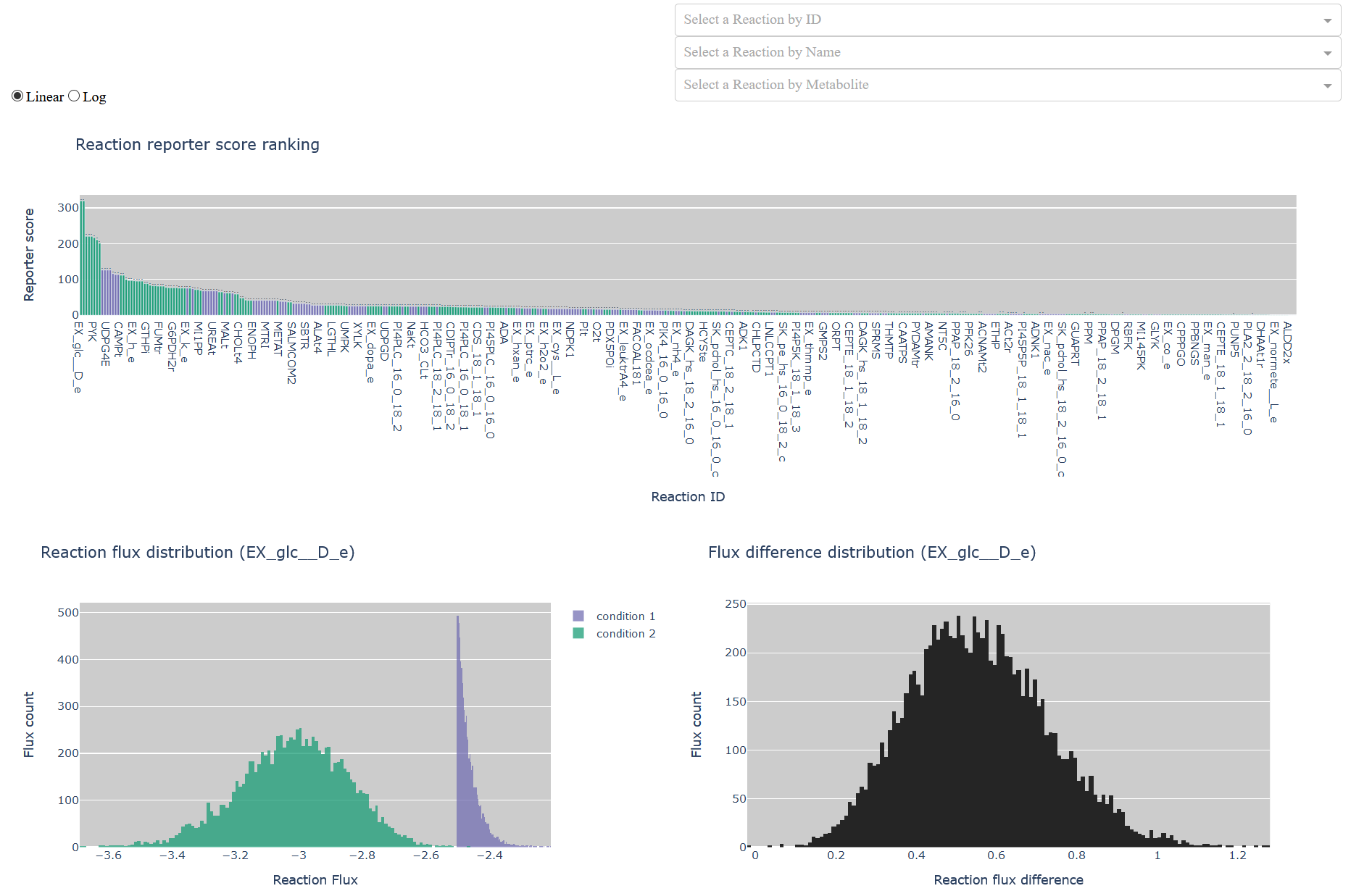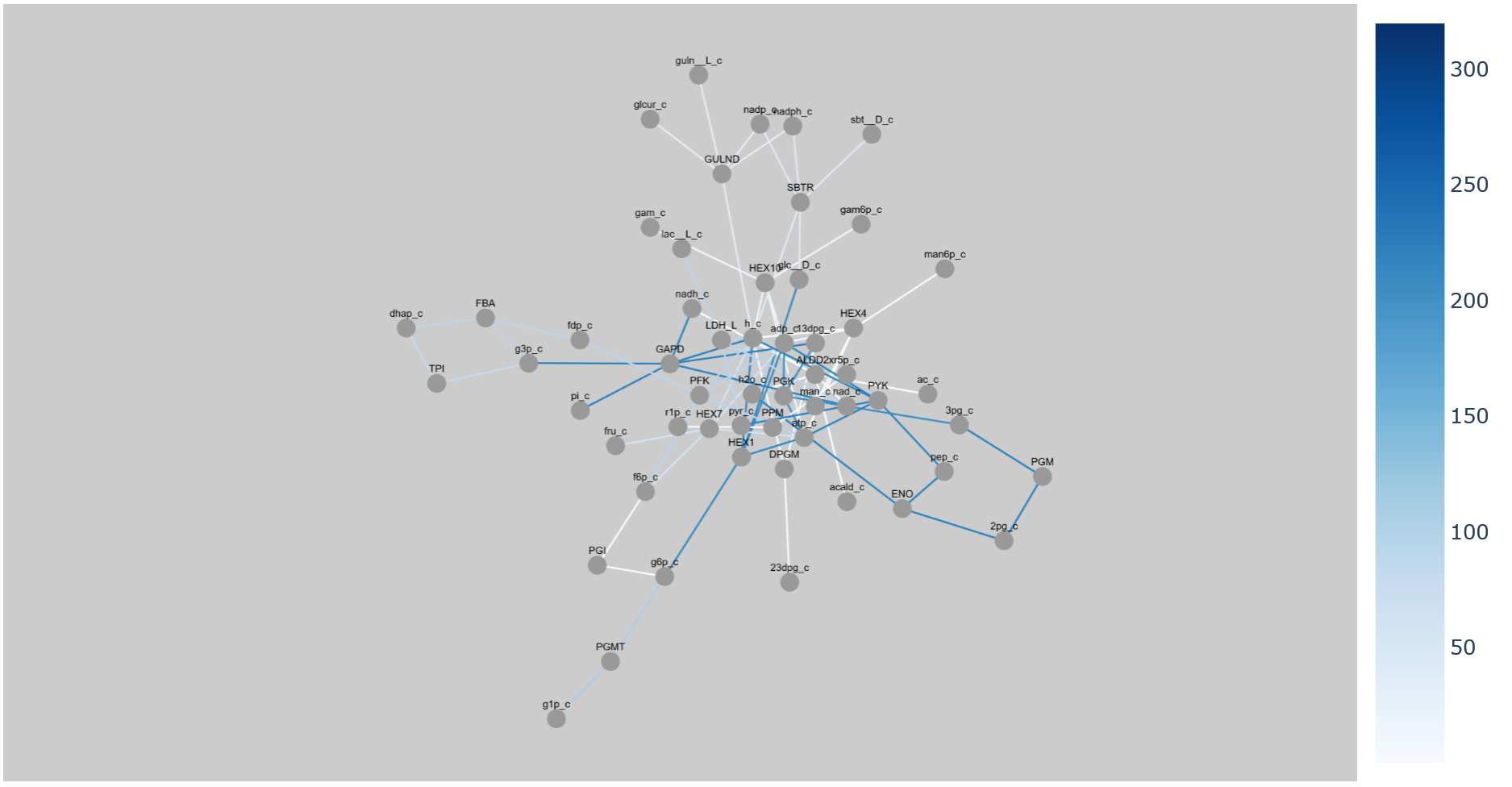News
15.09.2020
Visual exploratory web application for flux sampling results
In his master thesis, Constantin Holzapfel created a visual exploratory web application to visualize flux sampling results and help the user find relevant model behavior.
Constraint-based modeling methods can predict the metabolic phenotype of cells and organisms on a molecular level. However, in several unstable environments, a cellular goal cannot be easily identified. Consequently, flux sampling is an unbiased constraint-based modeling method applied in such situations. It returns information about reaction flux ranges, and their probability of a genome scaled metabolic model (GEM). Flux sampling simulations generate a lot of data from GEMs. Hence, data-driven methods are needed to analyze results as a whole, instead of focusing on a subset of known essential reactions.
In his master thesis, Constantin Holzapfel designed and implemented a solution for a data-driven exploratory web application. The resulting software can visualize and analyze flux sampling simulation results using current data visualization principles directly within common web browsers. A combination of standardized scoring of flux differences, flux distributions, and pathway network visualizations was used to guide the analysis process according to Shneiderman’s visual information-seeking mantra “Overview first, zoom in and filter, details on demand.”
In a case study, the red blood cell (RBC) metabolism was studied using the GEM “RBC iAB_RBC_283” in varying blood plasma environments. Constantin Holzapfel constrained this GEM with extracellular metabolomic measurements. To this end, athletes’ blood samples were taken at the following time points: before and after high-intensity training and two hours after exercise.
The simulation results showed the impact of glucose at these time points and how reduced glutathione levels change to provide higher protection against reactive oxygen species during training.


